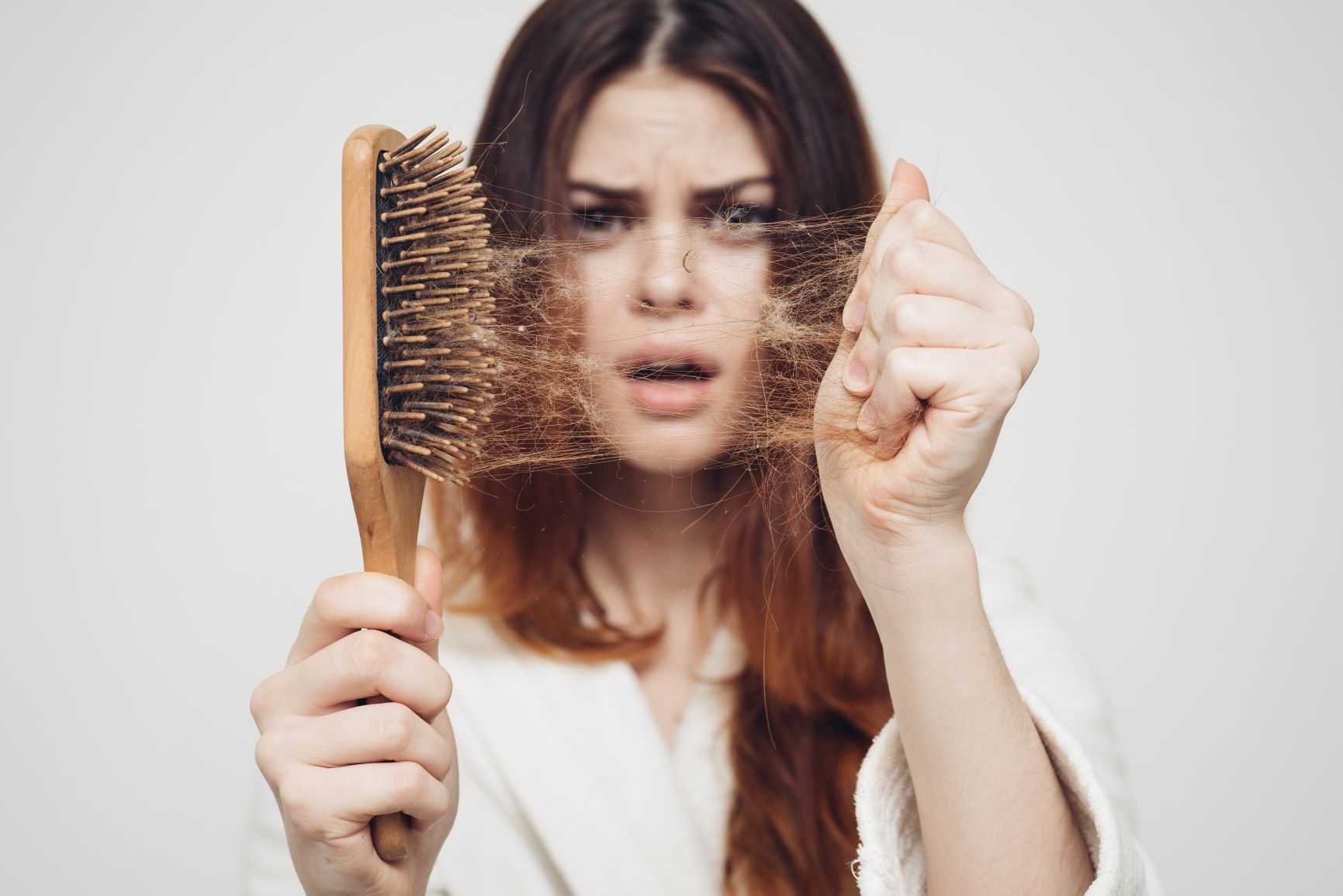Women’s Hair Loss: Thinning Hair Causes and Solutions

Experiencing hair loss can be devastating – especially if you’re a woman. There are several reasons that women experience hair loss, and a lot of it is actually related to genetics. However, things like hormonal hair loss can also play a role. You may even be experiencing more than one cause simultaneously.
Similarly to men, women hair loss can start with thinning hair all over. It could also appear as your center part gradually widening with time or a bald spot at the crown of your head. In rare cases, women will have a receding front hairline.
Knowing how hair grows
At any given time, your scalp is home to roughly 100,000 hairs, each with its own life cycle. Growing about a half-inch per month, its cycle can last from two to six years before falling out. Most of the hairs on your head are somewhere in the growth phase.
Is women hair loss normal?
To an extent, female hair loss is totally normal. In fact, most people shed up to 100 strands a day. So, if you see them in your hairbrush or on your clothes, no need to worry. On the other hand, losing hair in clumps or a noticeable change in thickness could be the sign of a bigger issue – and a reason to call your doctor.
Hair loss in women looks different depending on the person. There’s no single cause, but these are some of the most common reasons for women losing hair or experiencing thinning.
Thyroid problems
Your thyroid is a butterfly-shaped gland at the front of your neck that creates hormones. But if it overproduces or underproduces, it could affect your hair growth cycle, leading to thinning. Typically, the hair loss or thinning is accompanied by other changes, including unexplained weight loss or gain, heat or cold sensitivity, and changes in your heart rate.
Alopecia Areata
If your hair is falling out in large patches, it could be alopecia. Triggered by your own immune system, this condition causes your body to attack healthy hair follicles. Usually, the damage isn’t permanent and your hair will return within a year. In rare cases, a person could lose all the hair on their scalp and body.
Ringworm
Hair loss might not be the first thing you think of when it comes to ring worm, but it’s true: It can affect your scalp, leading to itchy, round, bald patches that are sometimes scaly and red in appearance. To counteract this, your doctor will prescribe an antifungal medication. And if you experience ringworm, be sure to check your family members or anyone you have close contact with for symptoms – it’s easy to spread!
Childbirth
Having a baby comes with a lot of changes – and hair loss can be one of them! During pregnancy, your high hormone levels keep resting hairs from falling out. Once the baby arrives, the strands will begin to fall out, and it can take as long as two years for your hair to recover from the hormonal hair loss.
Birth Control
Your birth control pill can cause your hair to thin as it causes hormones to suppress ovulation. Your chances of this side effect are increased if you have a family history of hair loss. Unfortunately, it can also happen if you stop taking the pill.
Hair Loss Treatment for Women
Female hair loss treatment can differ depending on the patient. A medication for female pattern hair loss, Minoxidil (Rogaine) could be prescribed to slow or stop the effects. It may even help hair grow back.
Low-energy laser devices could also inspire new hair growth. Available for in-clinic and at-home use, it can take two to four months, but studies have proven their effectiveness. However, because the FDA doesn’t require as rigorous of testing for devices, the long-term safety and effects of this method haven’t been recorded.
Hair transplants could also be an option, but because female pattern baldness causes thin hair all over the body, it could be difficult to find a suitable donor site. In addition, you’ll find endless products in stores and online that claim to stop hair loss or spur hair growth. Before purchasing, it’s best to check with a dermatologist, the FDA medical devices division or the Federal Trade Commission (FTC) for more information.
Hair loss can be difficult to cope with, but the solutions mentioned as well as everyday fixes like a different hair style, hairpieces, hats, wigs, and scarves can help mask the effects. If your hair loss begins to affect your body image in a negative way, a counselor or support group could be a good resource to adjust to whatever changes you’re experiencing with hair loss.
